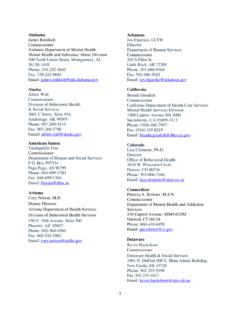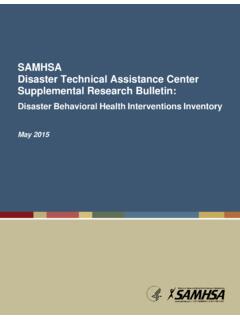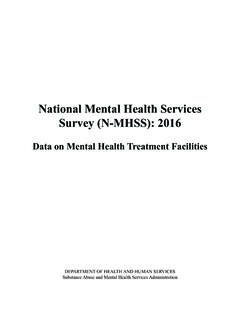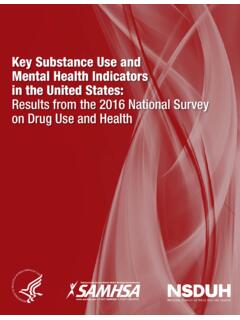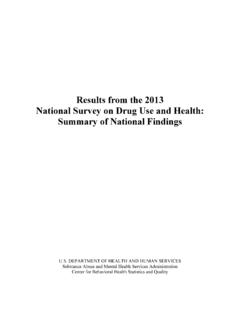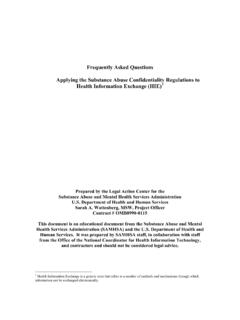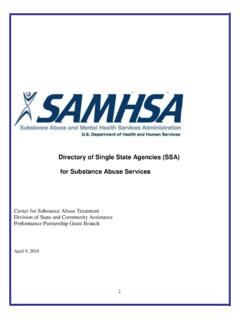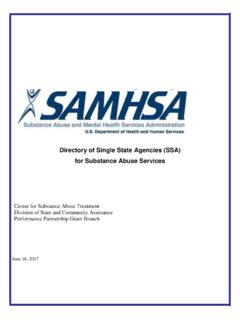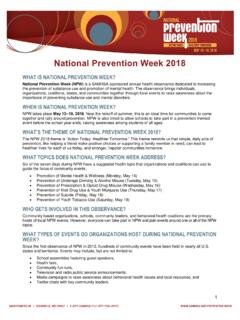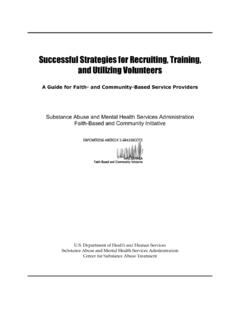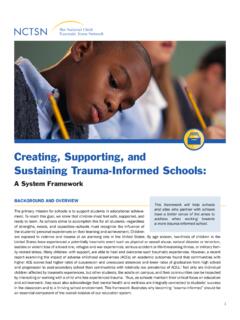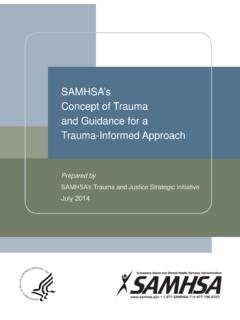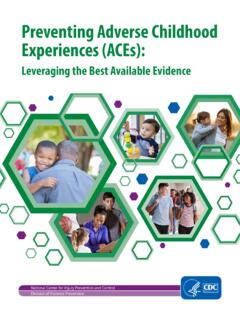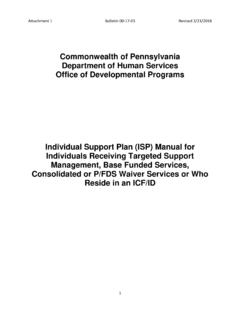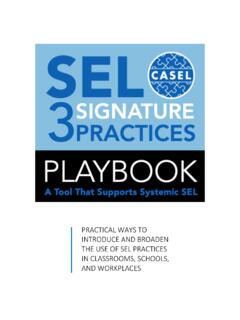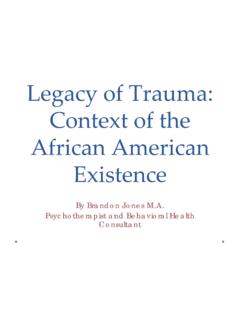Transcription of S CONDUCTING RESEARCH AND EVALUATION IN NATIVE …
1 NATIVE American Center for Excellence Page 1 EXECUTIVE SUMMARY STEPS FOR CONDUCTING RESEARCH AND EVALUATION IN NATIVE COMMUNITIES NATIVE Americans have suffered a long history of abuse from outside researchers CONDUCTING evaluations in their NATIVE communities. Literature suggests that some evaluations in NATIVE communities have betrayed NATIVE members trust because the researchers failed to conduct the studies in a collaborative, transparent, and respectful manner. Because of this history, CONDUCTING evaluations, which are required by many Federal funding sources, can pose many challenges. Steps for CONDUCTING RESEARCH and EVALUATION in NATIVE Communities explores the lessons and challenges of RESEARCH in Indian Country and identifies the steps that should be taken to ensure the EVALUATION required by Federal funding sources is effective and respectful of tribal sovereignty and cultural protocol, thus making the experience beneficial to both the government and the tribal community in which the RESEARCH is conducted.
2 Below are brief highlights of the steps that must be taken to successfully conduct RESEARCH in NATIVE communities: Get to know the tribal communities and establish relationships early on with elders and spiritual leaders who can serve as mentors, guides, and facilitators throughout the EVALUATION . Attend NATIVE meetings and ceremonies as a means to develop an appreciation for the history and culture of NATIVE Americans. Get a clear understanding of the historical trauma experienced by the tribe and explore the personal histories of individuals who will be involved in the study. Demonstrate respect for the community and its indigenous expertise through Memorandums of Understanding (MOU) or by hiring members of the community to serve as consultants on various aspects of the RESEARCH , such as program implementation and data collection. Understand that study schedules and deadlines that you have in place may not be in line with the NATIVE community s priorities, and any study done in Indian Country will be conducted on the tribe s schedule and can be delayed at any time for tribal ceremonies, family gatherings, or tribal rituals.
3 Appreciate the NATIVE community s assets and challenges. Engaging community partners and securing support in the EVALUATION process is greatest when the program is perceived as a potential solution to a recognized problem and builds on the community s strengths. NATIVE American Center for Excellence Page 2 Failure to engage the community in the partnership and integrate traditional practices that are congruent with tribal culture, language, and values can set up the EVALUATION for failure. Being transparent is crucial in all aspects of RESEARCH in NATIVE communities. Determining how study results will be presented to the community and public and what roles community members will play in developing and reviewing reports and publications is essential to the success of the RESEARCH . Respect protocol by going through Institutional Review Boards (IRBs) that have the authority to approve RESEARCH and oversee the study activities.
4 While these constraints can at first appear to be a threat to objectivity of the study, the evaluator should look at the review process as an opportunity for clarification and transparency to address any errors or misunderstandings. Respect the privacy of the community being studied. Avoid comparisons between communities because such comparisons can be invidious if they suggest that one community is more superior to another. Employ blended RESEARCH methods that include indigenous ways of knowing. These methods should include individual and oral histories and interviews with program participants and key informants. This can be accomplished through focus groups and talking circles as a means to engage reflective dialogue with program participants. Limit survey questions to those that bear directly on EVALUATION or program outcomes. Data sources, measures, and collection of information should be fully discussed with NATIVE representatives.
5 Keep the community fully informed as the study progresses by posting fliers or holding brief meetings that summarize study progress and accomplishments and recognize and validate contributions of community members. Study findings should be carefully discussed with and interpreted by community members. Be aware of intellectual and cultural property rights of the information and consult with the NATIVE communities in all phases of reporting and in any oral presentations that present the study results. Acknowledge and give credit to the community for the scientific results from the study, and consider key community members as co-authors who participate in writing reports and publications. Assist the community in sustaining the programs that are implemented by seeking out and applying for funds or by presenting study data that will support the community s efforts in securing the continued program support.
6 Steps for CONDUCTING RESEARCH and EVALUATION in NATIVE Communities also provides personal stories that demonstrate lessons learned and show that, despite the history of trauma surrounding RESEARCH in NATIVE communities, evaluations can be successfully conducted and benefit both the researcher and the community. The researchers learned they must show the proper respect for protocol, prove themselves trustworthy, and become known throughout the community before a study can move forward. While qualitative study is more accepted in NATIVE communities, researchers learned that quantitative RESEARCH , while more challenging, can be successfully carried out as well. The key to successful quantitative RESEARCH is developing a high level of trust NATIVE American Center for Excellence Page 3 between the evaluator and community facilitators, showing a clear connection between the data collected and direct community benefit, showing commitment to training and learning, and being willing to discuss any cultural issues that may arise in the process of the EVALUATION .
7 Also, these researchers learned that governing bodies aren t always the most influential groups to contact when doing RESEARCH . In many tribes it is the elders, medicine people, traditional chiefs, and chapter houses that must be part of the RESEARCH design preparation. In conclusion, Steps for CONDUCTING RESEARCH and EVALUATION in NATIVE Communities not only explores the challenges related to RESEARCH , it provides the crucial steps that all researchers must take in order to conduct effective EVALUATION in Indian Country. As demonstrated throughout the pages, the key to CONDUCTING RESEARCH and EVALUATION in NATIVE communities lies heavily on the attitude of the researchers as they approach the EVALUATION process and in the relationships they establish with the community. As shown in the personal stories and throughout each step, evaluators should approach RESEARCH in NATIVE communities with humility. The relationship between evaluators and the community should be considered sacred and demonstrate the trust, harmony, sensitivity, reciprocity, respect, mutual participation, and collective benefit that will make the journey they take together a successful one.
8 NATIVE American Center for Excellence Page 4 Steps for CONDUCTING RESEARCH and EVALUATION in NATIVE Communities Introduction RESEARCH and EVALUATION studies in NATIVE communities have been characterized by mistrust and misrepresentation. Most of these missteps are the result of actions by researchers with little or no experience working with NATIVE governments, NATIVE communities, or NATIVE American people. RESEARCH has been described as probably one of the dirtiest words in the indigenous world s vocabulary [1] and researchers have been called ..mosquitoes [who] suck your blood and leave. [2] In contrast, some program evaluations have been described as positive by both the NATIVE entities and researchers involved. This paper briefly explores the lessons and challenges of RESEARCH and EVALUATION in NATIVE communities, as well as the type of evaluations required by Federal funding sources to determine program effectiveness.
9 It further identifies steps in CONDUCTING RESEARCH and EVALUATION in these communities and concludes with personal stories of successful EVALUATION experiences. RESEARCH Requirements NATIVE communities have received Federal, state, and private funding for decades. While the requirements of outcome evaluations have recently become more rigorous, they are not new. For example, in the mid-1980s, the Substance Abuse and Mental Health Services Administration (SAMHSA), Office for Substance Abuse Prevention, now known as the Center for Substance Abuse Prevention (CSAP), awarded a number of grants to NATIVE governments and organizations that required that a program EVALUATION be conducted by independent evaluators according to a prescribed methodology. Subsequent CSAP grants and many other funding sources have had similar program EVALUATION requirements. In response, NATIVE entities, which frequently include NATIVE colleges, have developed working partnerships with evaluators, who may themselves be NATIVE American.
10 Problems in CONDUCTING RESEARCH in NATIVE Communities NATIVE American Center for Excellence Page 5 American Indians and Alaskan Natives recognize the need for program evaluations to reduce the very substantial health and behavioral health problems that their communities face. The implementation of RESEARCH and EVALUATION in NATIVE communities has created concern, however. For example: In a fairly recent and notorious case, researchers collected blood samples over many years from members of the Havasupai tribe in Arizona, ostensibly to investigate the genetics of diabetes, as specified by signed informed consents. These blood samples were allegedly then used for other purposes, including an investigation of the genetics of schizophrenia, during the course of which the blood samples were distributed nationally. [2] In Canada, blood drawn from the Nuu-chah-nulth people for the stated purpose of health RESEARCH was then used to investigate their ancestry.
